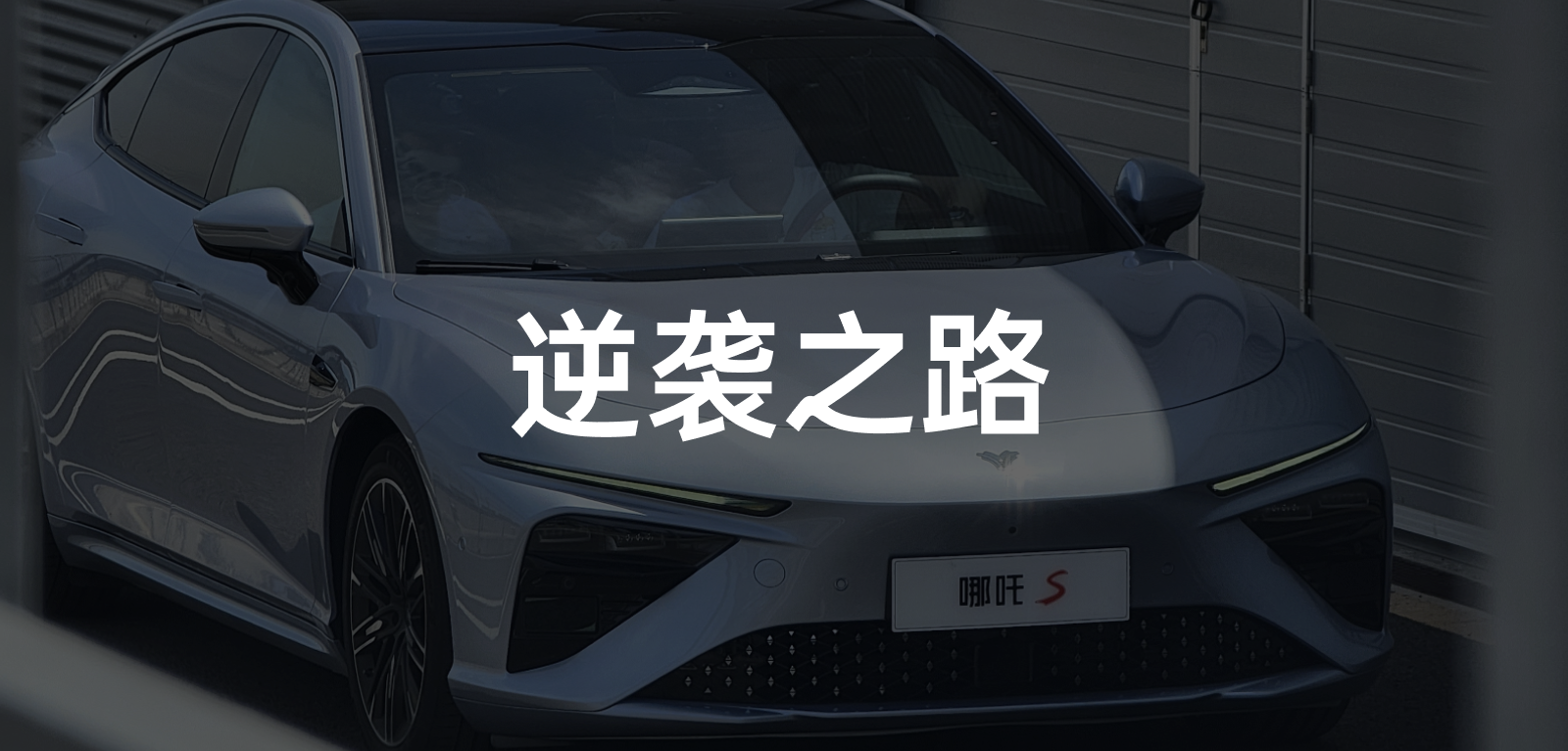“First-class enterprises set standards, second-class enterprises build brands, and third-class enterprises make products.” This saying was originally popularized in the marketing industry and has had a great impact on the public, including myself.
Although many people are reluctant to admit it, in the business world and society, companies and individuals are still divided into different tiers. For example, in the emerging electric vehicle industry, the top three companies – NIO, XPeng, and Ideal – are commonly referred to as the “three stooges of electric vehicles”. Despite the crude name, they have already become household names in terms of sales volume and brand recognition.
Along with the top tier, there is a second tier made up of brands with sales volumes and popularity that are inferior to the top tier brands. Currently, Zhidou and NIO are the main brands in this tier. Regardless of whether you accept it or not, most consumers see these companies as second-tier brands. Zhidou has gone through a transformation earlier than NIO, launching the C11 vehicle in September 2021 and targeting the 150,000 to 200,000 yuan market. Two months ago, they released the C01 vehicle with a pre-sale price ranging from 180,000 to 270,000 yuan.
Just moments ago, Zhidou announced the official pricing for their flagship vehicle, the NETA S, on their Shanhail platform. The prices range from 199,800 to 338,800 yuan. Many people were confused by the different versions that the company offers, which can roughly be understood as basic, mid-range, and top-level models. Among them, the pure electric versions are divided into a 715 km long-range version and a 650 4-wheel drive version, priced from 245,800 to 338,800 yuan. The extended-range version, with a 1,160 km range, is priced from 199,800 to 239,800 yuan. With this announcement, Zhidou officially began its upward brand journey.
Impressive Appearance
“Beauty is justice” – what initially caught my attention about the NETA S was the picture of the car that went viral on social media, showing its low posture and sleek cockpit. Even from a side view, it is still very distinctive.
The NETA S measures 4,980mm in length, 1,980mm in width, and 1,450mm in height, with a wheelbase of 2,980mm. As a B+ level vehicle, it is relatively large, especially with its width of 1,980mm and height of 1,450mm. Its width-to-height ratio of 1.36 is what makes the car look so low and sleek.Translated English Markdown text with reserved HTML tags:
In terms of details, NETA S also put a lot of effort into it, such as its daytime running lights. As the finishing touch of the whole front face, NETA S adopts a very slender design, and then raises it at both ends and lowers it in the middle, making the front face look full of “anger value” and ready to fight at any time. If you look carefully at its daytime running lights, you will find that the edge of the light strip gradually narrows, with a width of only 5 mm at the narrowest point. In order to ensure uniform color, this small light strip is equipped with 68 LED beads.
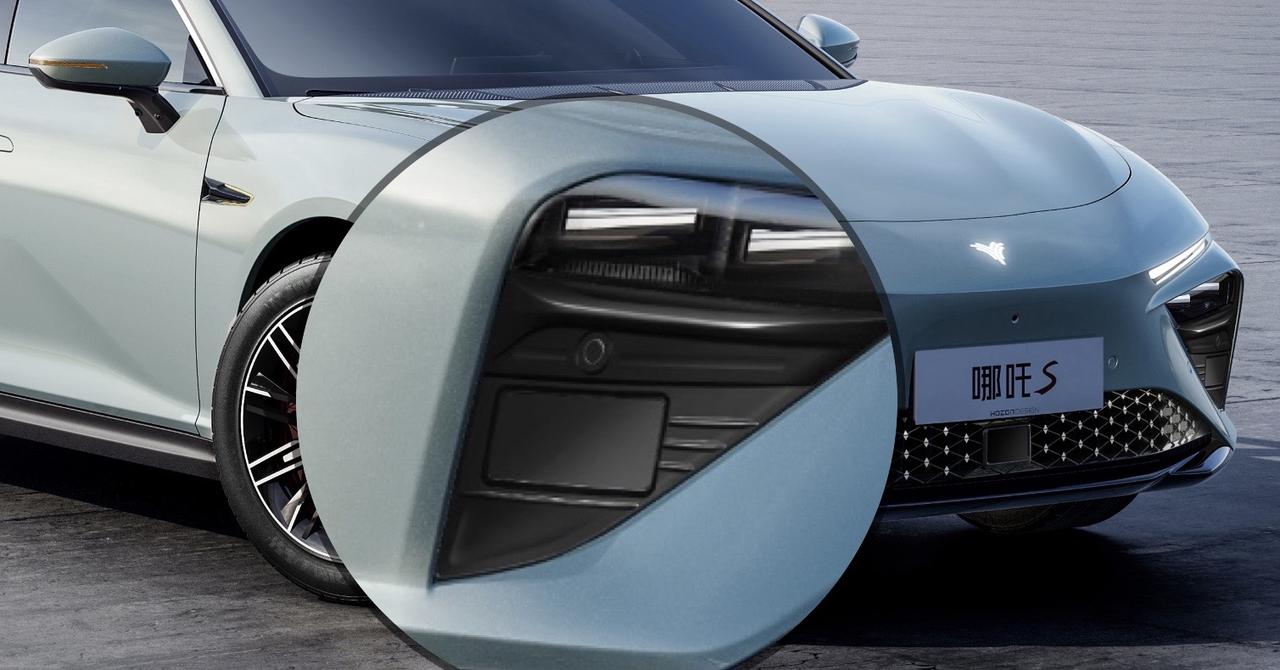
In the “triangle area” below, there are high and low beam headlights, ultrasonic corner radar, and truly hidden laser radar. Yes, the difficulty of integrating laser radar into vehicle exterior design has been overcome by NETA S. If I don’t emphasize it, many people may not be able to tell that this is a laser radar. The detail of the “most beautiful laser radar” gets full marks from me!
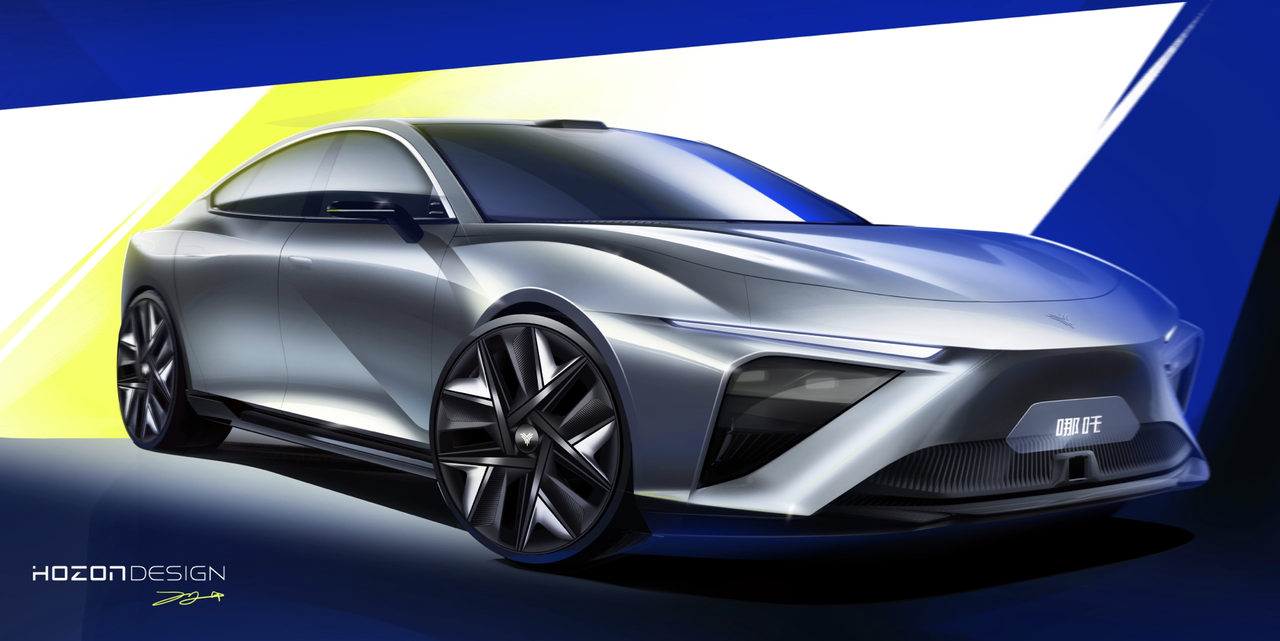
A side note, actually looking at the early concept of NETA S, NETA was intended to put the laser radar on the top of the car. The ultimate choice to place it under the headlights, similar to the thinking of XPeng P5, is consistent in function. The two laser radars are used to supplement the blind spots of the left, right, low and high views. Compared to the layout on the roof, the performance requirements for the laser radar here are not high, but due to the low height, it needs to be installed on both the left and right sides.

The design of the NETA’s tail is also very interesting. In the words of NETA’s Vice President Chang Bing, it follows the concept of “long horizontal and short vertical” and is composed of a LED light strip named after Lu Bu’s weapon “Fangtian Huaji” with 168 LED beads.
When it comes to the color of the vehicle’s exterior and interior and the selection of wheel styles, NETA S offers many options:
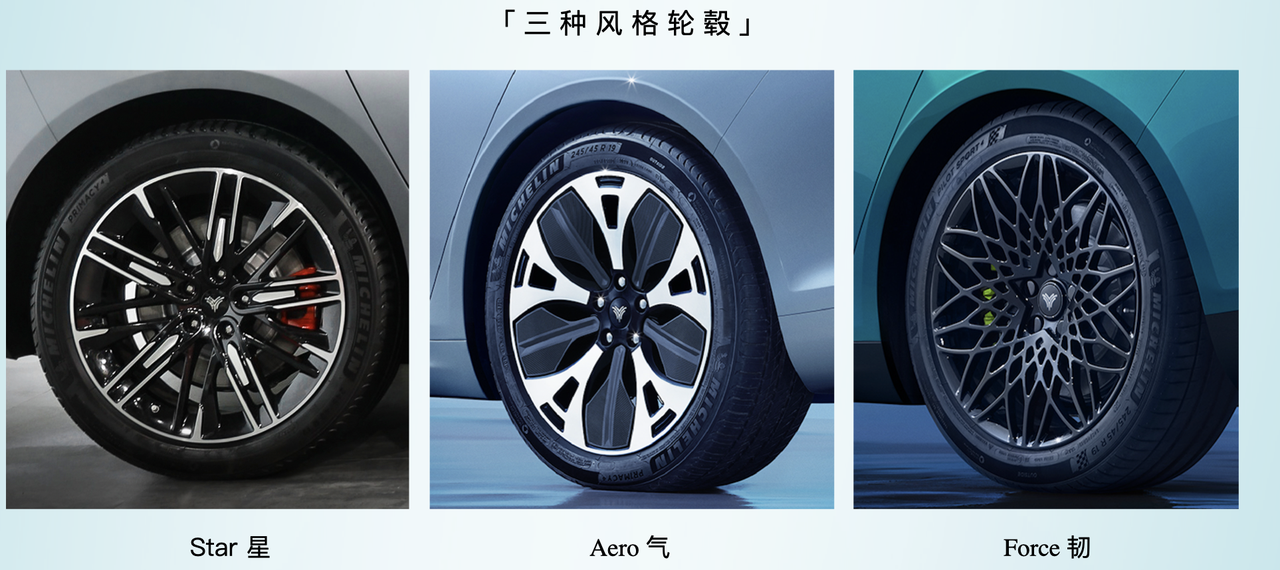
-
The wheels come in several styles: Star, shaped like stars. Aero, with stronger closure and better aerodynamics. Force, with an exaggerated shape and a forging process used.
-
The exterior color naming of NETA S is very interesting, all of them carry a sense of speed, including Particle Blue, Flashing Red, Comet White, Nebula Purple, Polar Green, Phantom Black, Thriving Yellow, Raptor Brown, and Dust Silver, for a total of nine colors.
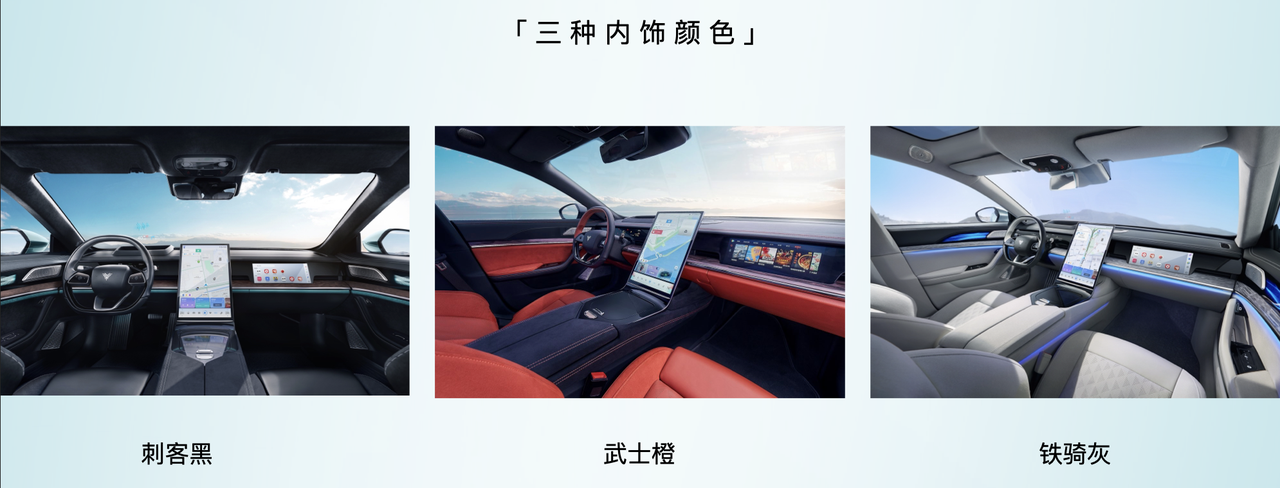
-
The interior is full of the charm of ancient Chinese military, for example: Assassin black, Warrior orange, Iron Cavalry grey, etc;
Looking at the NETA S alone, if it weren’t for the existence of the logo, it would be hard to find the relationship between it and the previous V/U Pro in appearance. To put it in simple words, he does not approve of the clichéd family design language. But simply looking at the appearance of the NETA S, I think this rebellion is definitely successful.
Young people have to be truly “dynamic”!
In fact, something can be clearly expressed from the interior and exterior design of the NETA S, that is, sportiness.
I know this word has been overly used now, but the definitions are quite different at different brand levels. For example, some car companies add double-sided exhausts and extremely exaggerated tail wings and “auto parts” colored decorations to a family car in order to make it “sportier.” They will then loudly proclaim: buy our car, and you don’t have to retrofit. This may be a microcosm of our lack of confidence in our culture in the automotive industry.
Fortunately, there are still intelligent car companies that let us see the true meaning of “sportiness” during the era of “Kill Matt” and “non-mainstream” in the auto industry, which is no longer a bone-cutting concave shape. The NETA S is certainly the latter. Let’s look at a few parameters first:
-
Wind resistance coefficient of 0.216;
-
Acceleration of four-wheel drive version in 3.9 seconds;
-
Front double wishbone, rear five-link;
-
Moose test scores up to 80 km/h;
-
0-100 km/h braking distance of 36 meters.
I think the hardware and results themselves can largely explain that the NETA S has achieved true “sportiness.” However, due to the pandemic, I didn’t have the chance to test drive the NETA S in person, so I regret that I cannot give my actual experience. But you can refer to my colleague Leinhardt’s track test drive video.
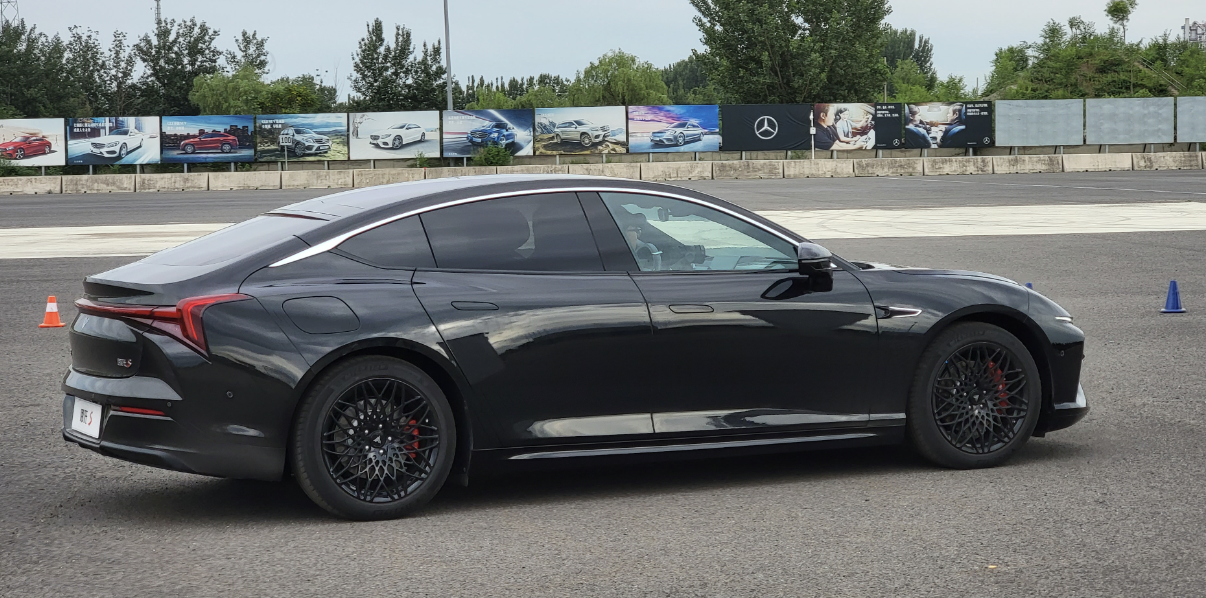
In fact, there is another parameter that can clearly reflect the limit of this car’s handling performance, which is the center of gravity height. Theoretically, the lower this value, the better. The NETA S is 470 mm. No concept? The IM L7, which emphasizes handling, is 490 mm, and the NIO ET5 is 482.6 mm.
Looking at the hardware and results, the NETA S’s handling has a very good foundation. From a horizontal perspective, compared to the competitors in this price range, it has advantages in acceleration, center of gravity height, and mechanical hardware itself.
Can the next generation keep up?
NETA has shouted the slogan “keeping up with the first generation” on the S model. Compared with the interior and exterior design, technological breakthroughs are theoretically more difficult.The reason for this is not difficult to understand, because the current total number of employees at NIO’s intelligent center is between 600 and 700, and it will quickly expand to more than 1,000 by the end of the year. However, compared to industry leaders, this number is still relatively small: as of the end of 2021, the number of R&D personnel at NIO, Xpeng, and Li Auto were 4,809, 3,415, and 5,271, respectively.
In terms of investment, CEO William Li mentioned, “In the future, NIO’s investment in autonomous driving will continue to be maintained at the level of 800-1,000 million yuan per year.” However, compared to the investment of at least 3 billion yuan per year from industry leaders, this is not very generous.
Objectively, NIO’s current size is not sufficient to support it to compete with industry leaders in terms of “burning money” capabilities. But everyone’s enthusiasm has never stopped, and it’s difficult to achieve cost-effectiveness and breakthroughs in this situation. So, how can NIO save money and achieve the goal of “matching the first generation” on the NIO S?
TA PILOT
First of all, NIO has adopted two different sensing systems on the NIO S model, which are distinguished by 3.0 and 4.0 respectively.
The sensing hardware of TA PILOT 3.0 is as follows:
-
11 cameras (2 2-megapixel front-facing + 4 surround + 1 rear-view + 4 perimeter);
-
5 millimeter-wave radars;
-
12 ultrasonic sensors;
-
Perception units including high-precision positioning and high-precision maps;
-
The computing platform is the double TD A4 of Texas Instruments, with computing power of 16 TOPS.
NIO has equipped the NIO S with the TA PILOT 3.0 system as standard, which can be said to be the key point where NIO quickly catches up in assisted driving. Many people think that the standardized configuration only enhances the cost-effectiveness of the NIO S, but actually it is more interesting than that.
First of all, the unified standard configuration shows that NIO’s brand product positioning label “technology” has deeply penetrated the product thinking, and intelligent driving has become one of the main components of the product that cannot be ignored or abandoned.
In addition, by standardizing the TA PILOT 3.0, NIO has saved its colleagues in the assisted driving software department a lot of trouble, and can improve development efficiency.
The sensing hardware of TA PILOT 4.0 is as follows:
-
Dual LiDAR;
-
11 cameras (2 8-megapixel front-facing + 4 surround + 1 rear-view + 4 perimeter);
-
5 millimeter-wave radars;
-
12 ultrasonic sensors;- High-precision localization units and perception units such as high-precision maps;
-
The computing platform is the Huawei MDC 610, with a computing power of 200 TOPS.
NETA kept the 4.0 version for the top-of-the-line 715 model, which is the laser radar version. The main architecture has not changed much, still primarily based on vision, with the addition of laser radar for filling in blind spots, a clearer 8 million pixel front camera, and the larger computing power of the MDC 610 platform.
The reason for doing this is very simple, because when we analyze the achievable functions of this system, we can see that TA PILOT 3.0 can support intelligent summoning, AVP (valet parking), NTP (memory parking), NNP (high-speed automatic navigation assisted driving), and HWA (high-speed lane changing assistance), which already cover the most mainstream functions. The addition of laser radar, 8 million pixels front camera, and Huawei MDC platform only increase the NCP (urban automatic navigation assisted driving) function.
Based on current demand for assisted driving functions, the most fiercely contested are ordinary L2 plus high-speed navigation. As for the relatively complex urban navigation function, no company in China has started large-scale deliveries on mass-production models yet. The assisted driving functions using NETA’s self-developed algorithm, the most complex NCP, will not begin updating until the first half of 2024, while the remaining functions will be updated in the first half of 2023 at the earliest.
Here, let’s explain again that NETA only used the hardware of the MDC 610 platform, rather than adopting Huawei’s algorithms or packaging solutions. This is Huawei’s hardware supply as an “automotive supplier,” with no complicated entanglement between NETA and Huawei.
This raises a small question, because the investment in capital and personnel for autonomous driving is huge. The current HI version models that are deeply integrated with Huawei are difficult to achieve, and the new platform with all-new hardware carried by Wey’s Xiaoli Li has just started. Although NCP will not begin to be pushed until 2024, there is still a big question mark regarding the actual performance of TA PILOT 3.0 with all-new software and hardware.
Cabin
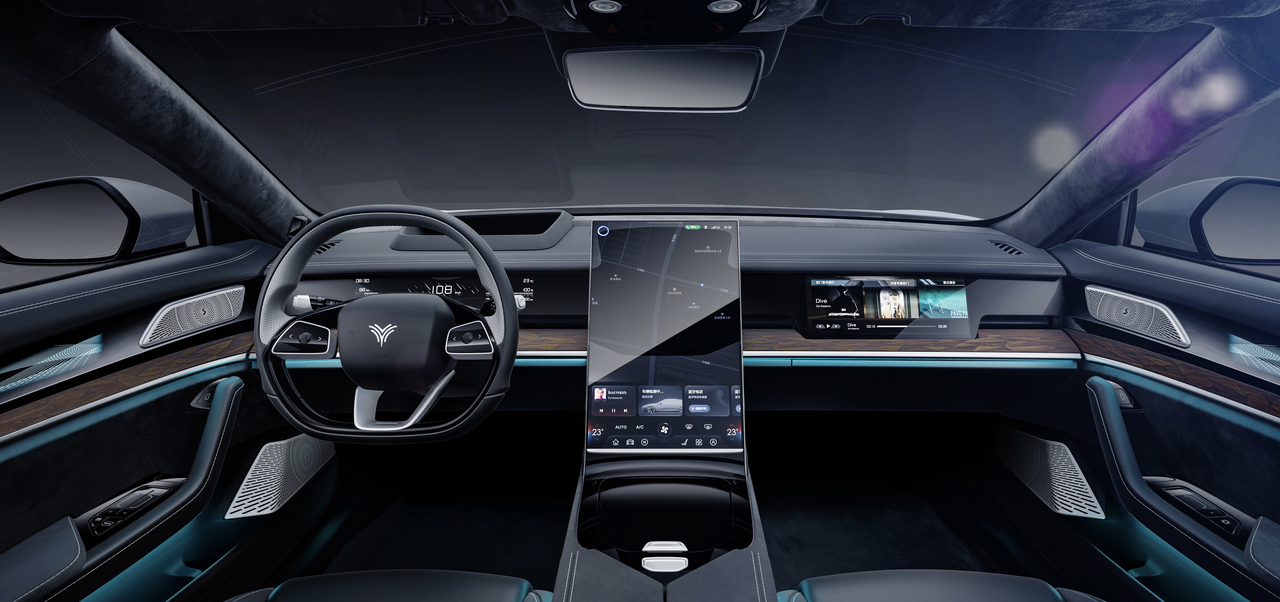
With the hardware for assisted driving in place, the planning of the cabin naturally cannot be neglected. NETA’s S cabin has “four-screen interaction” as its core:- 17.6 inch suspended central control screen: Made of magnesium-aluminum alloy material with a thickness of only 13.3mm and the narrowest black border of 6.5mm, the screen-to-body ratio is nearly 90%. It has a resolution of 1,600*2,560 and is responsible for both entertainment and vehicle control functions. The Corning Gorilla Auto Grade cover is even covered on the screen surface. Many automakers that have wide screen borders should take a closer look at their own products and wonder why the borders can be so rough.
-
12.3 inch co-pilot exclusive entertainment screen: Specially designed for co-pilot passengers to provide voice entertainment and other functions.
-
AR-HUD head-up display: Its focal length is 7m in front of the driver’s eyes and can form a 49-inch projection area. It provides information display, AR navigation, safety assistance driving, and entertainment applications.
-
13.3 inch hidden instrument screen: As a backup for AR-HUD, it ensures that the driver can obtain relevant information about the vehicle operation in time.

The four display areas are driven by the mainstream platform of the flagship, Qualcomm’s 8155 chip. Therefore, the overall smoothness of the vehicle system is guaranteed to a certain extent, and the remaining functions need to be improved by the first batch of delivery users and NETA together.
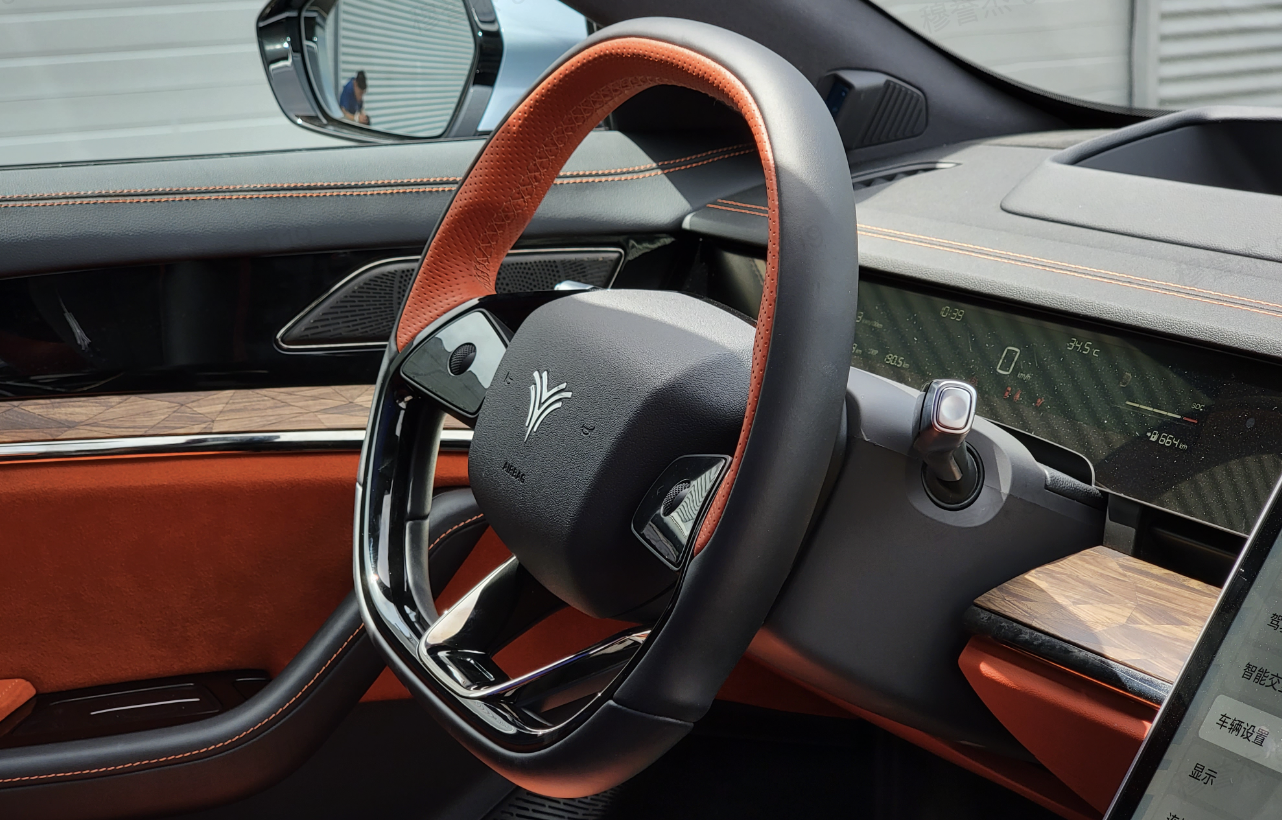
Another innovative feature of the interior is the suspended steering wheel. This design is indeed very interesting, and the button setting is extremely simple, only a roller control, which is very “Tesla”.
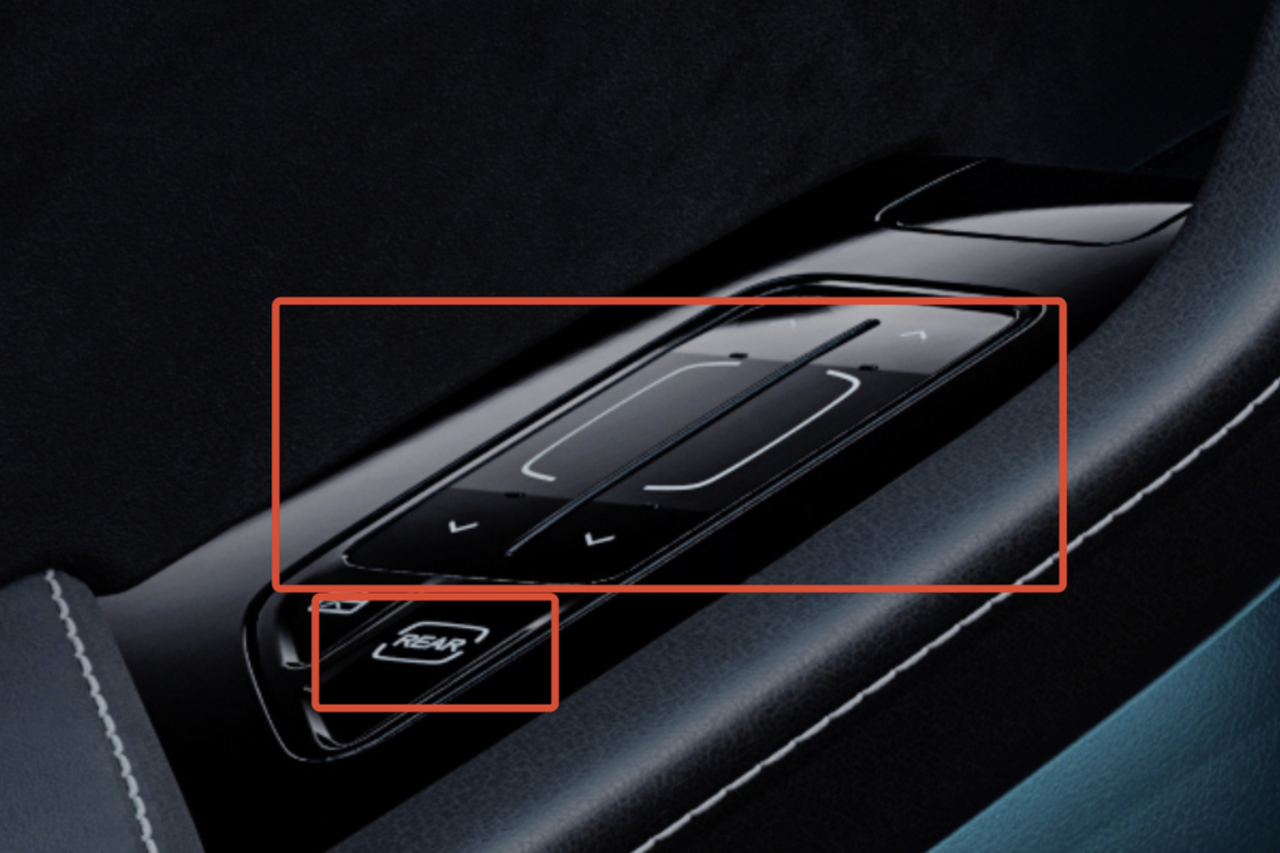
Of course, one of the minimalist features of NETA S is that not only are the physical buttons for the car system almost non-existent, even the window controls are touch-sensitive and need to be switched to the rear row through “REAR”. Although this has been criticized by everyone, it also reflects NETA S’s radical consideration for the entire vehicle system-on-architecture. NETA officials have noticed this problem, but have not yet provided a specific solution.
Apart from the number of interior screens, the most popular part of the car now is the sound system. NETA S did not choose an OEM from a big factory for its sound system, but instead gave the highest number of units and overall power: The 21-speaker sound field system has a maximum power output of 1,216W and supports 7.1.4 channels, including 12 main speakers, 1 subwoofer, 4 ceiling speakers, and 4 headrest speakers. At this price point, the parameters of NETA S’s sound system should be the highest.About a year ago, I participated in the test drive event of NETA and met with the person in charge of product planning. I asked out of curiosity why domestic car companies seem to not focus on the concept of platform production. The answer at that time was probably because of the high cost. In fact, NETA’s Shanhai platform was already in planning at that time.
Regarding the advantages of the Shanhai platform, I think besides the various hardware features mentioned earlier on the NETA S, NETA also has a very clear plan for the layout of domain control architecture.
For example, on the NETA S, it is equipped with their independently developed PDCS2.0 power domain controller system, integrating VCU, BMS, and HCU control systems. It also features intelligent battery health management, intelligent charging planning, intelligent health check, intelligent range prediction, and A/B partitioning to achieve OTA remote seamless updates.
From a hardware perspective, the NETA S has strong allure in terms of assisted driving and cabin. Rationally speaking, the meaning of “matching the first generation” is more based on NETA’s current volume and funds, which first launched the intelligent hardware and later progressed to match software features.
There is nothing wrong with the idea, but how to achieve this depends on NETA’s long-term investment in software. However, it is unquestionable that hardware specifications have more influence on consumers’ confidence than software features. After all, consumers are well aware that they cannot practice true kung fu without good physical condition.
Pure electric + range extension dual power
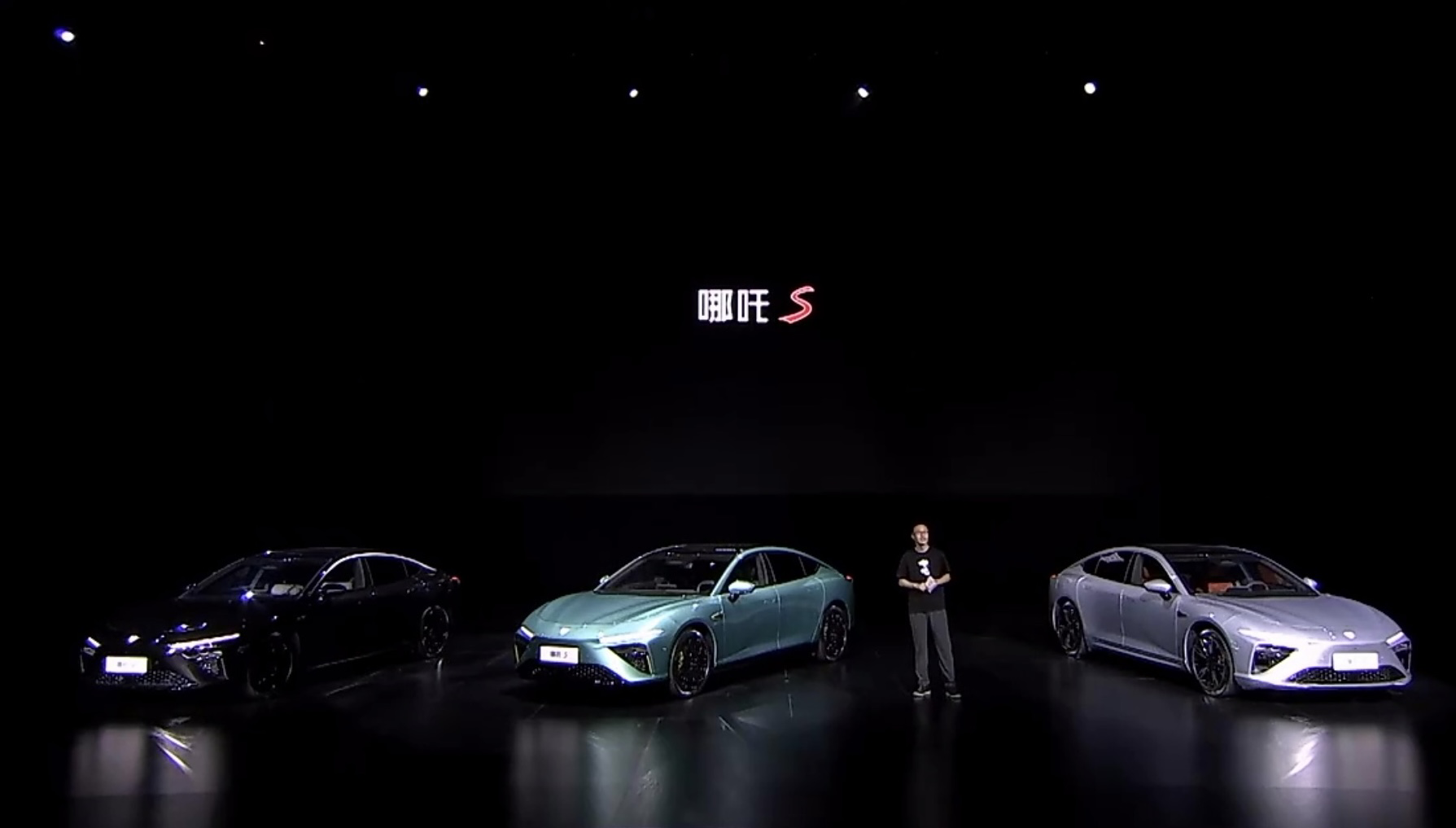
Regarding the sales of the NETA S, CEO Zhang Yong shouted “protect the front and attack the rear”. With the recent official launch of the Deep Blue SL03, the target has become even firmer, aiming to achieve over ten thousand deliveries in the first month. Therefore, at a communication meeting before the official release of the NETA S, I also asked Zhang Honghan, the General Manager of NETA’s Automotive Brand Center, who said that the target can be achieved as soon as next year.
There are two reasons for this: one is the pressure of increasing production. However, the most important thing is that NETA brand attaches great importance to the NETA S, and they will be very cautious in promoting the product’s services and channels at the early stage, hoping to continue improving the user’s experience through improvement and enhancing the reputation of the first batch of users, so that further scaling can be achieved effortlessly.
About a few months ago, I saw the sales forecast of NETA S EP40, which is the overall sales forecast for the NETA S for its suppliers. In 2023, the overall sales of this car is expected to be around 60,000, among which the 715 long-range version will occupy more than half of the sales, followed by the range-extender version accounting for 15% and the four-wheel drive version accounting for 20%. Of course, this is an early estimate, but everyone can refer to this data.## Translation
Where does Zhang Yong’s confidence in “guaranteed performance” come from? Is it due to the “generation-level equalization” in technology? No. It’s because NETA S has launched various versions to cater to different demands, including three different versions of pure electric models with different ranges and the combination of extended range power. This is a typical strategy of tapping into both the pure electric market and gasoline cars.
Why is it 310 km for the extended range?
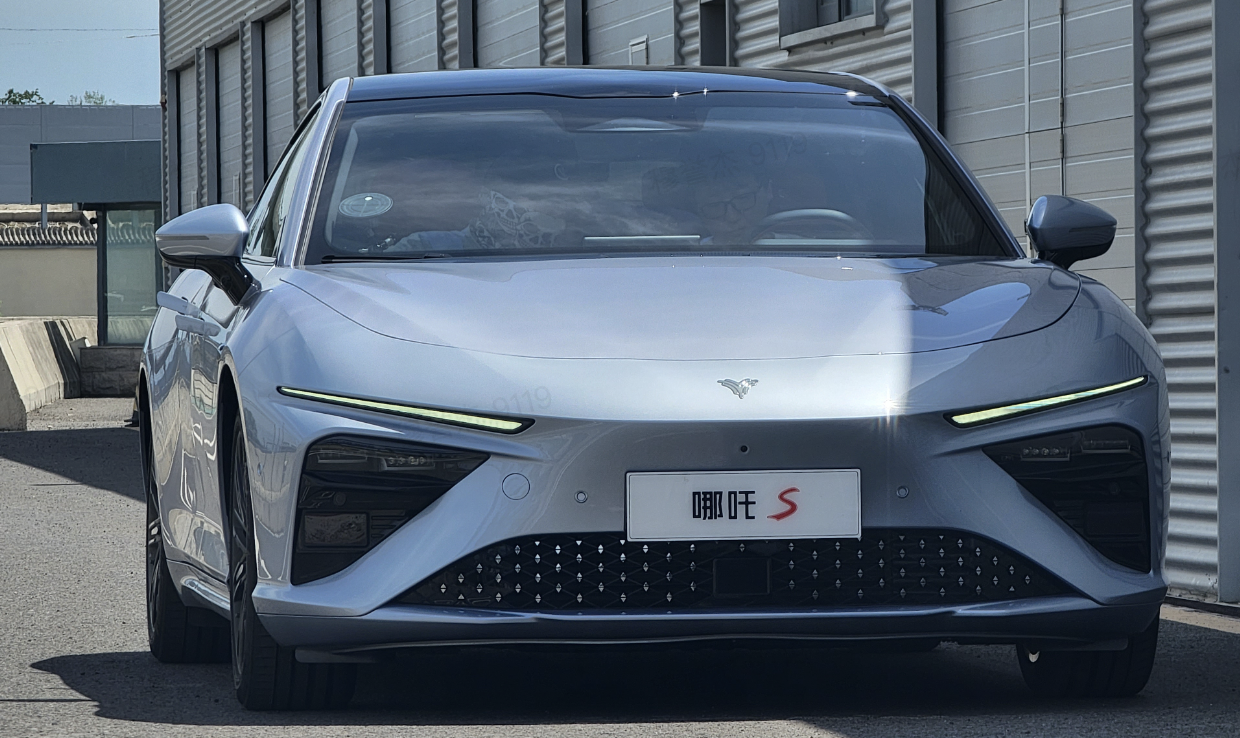
The extended range version of NETA S has a pure electric Continuous Local Temperature Control (CLTC) range of up to 310 km, which also uses a 43.5 kWh battery, making it the car with the longest pure electric range on the market today. Why did NETA choose to make such a large electric range for an extended range vehicle?
The essence of this question is that it prioritizes pure electric driving and compresses the start-up scenario of the extended range component to a minimum. I believe that whether it is the extended range or plug-in hybrid, the batteries of these types of cars will definitely get bigger and bigger in the future. In fact, we should be asking why NETA limited the range of this extended range version to 300 km.
The official explanation is very interesting, in essence, the engine can be completely regarded as a “long-range backup battery.” In NETA’s words, this is called the user experience of “not losing the pile.”
First of all, NETA has synthesized the sales of its internal pure electric models and the survey results of the sales of pure electric models in the market. It found that the range of the vast majority of pure electric vehicles is centered around 400 km. These users generally do not exceed 60 km of driving distances per day, and they will go to charge up when the battery SOC is approaching 30%. Therefore, the actual weekly mileage is around 300 km.
As for the extended range models, since there is no need to consider the limit of the battery’s SOC, they can directly use the bigger battery that supports the 310 km range. Therefore, the majority of commutes can be completed by pure electric driving. Only when crossing the long-distance limit will the engine be used.
Moreover, many people believe that the extended range version is a choice made by the manufacturer to reduce the cost of batteries because the industry predicts that battery technology will decrease in cost over time. However, with recent price hikes in batteries, the cost advantages of the extended range version is no longer there. Therefore, NETA’s idea is not to blindly pile up batteries to achieve a “pure electric range of 1,000 km” goal. Instead, it has launched both pure electric and extended range versions with reasonable range configurations. The core goal is “pure electric driving,” that is, to prevent users from “losing the pile” of the battery.
Final Thoughts
The positioning of NETA S’s product is exceptionally clear, as mentioned by Zhang Honghan, the general manager of the NETA Automobile Brand Center. “Sports,” “technology,” and “youth” are the three major labels of NETA S. Among them, sports are greater than technology, and young people are the ultimate consumers. This also aligns with my experience of being attracted by the appearance and various performance parameters of NETA S, and then discovering the top-notch hardware for intelligent configurations. Of course, I am indeed a young person.On the NIO ES6, I saw brands in the second tier, focusing on a “low-price strategy” to stand out, so the ES6 must sell well, referring to both sales volume and user reputation. The typical example of upward breakthrough is NIO’s main competitor, XPeng’s P7.
However, with the evolution of the new energy vehicle market from a “dumbbell-shaped” to a “spindle-shaped” market, competition is increasingly fierce in the 200,000-300,000 yuan price range. In addition to XPeng’s P7, there are also Tesla Model 3, BYD Han, and the recently released BYD Dolphin, as well as the LF-S01 from Leapmotor. The range of car models available at this price continues to expand.
Of course, NIO is not only limited to this price range, as there are too many competitors waiting to pounce. In the triangle relationship of volume, quality, and speed, trade-offs are inevitable. In terms of hardware parameters, the NIO ES6 has already reached the mainstream level and features outstanding sports characteristics. However, we still need time to observe its long-term service quality, ADAS, and the software ability of the cabin.
The story of upward advancement has just begun, and NIO’s courage is commendable, but we still need to wait for the market’s opinion.
This article is a translation by ChatGPT of a Chinese report from 42HOW. If you have any questions about it, please email bd@42how.com.
